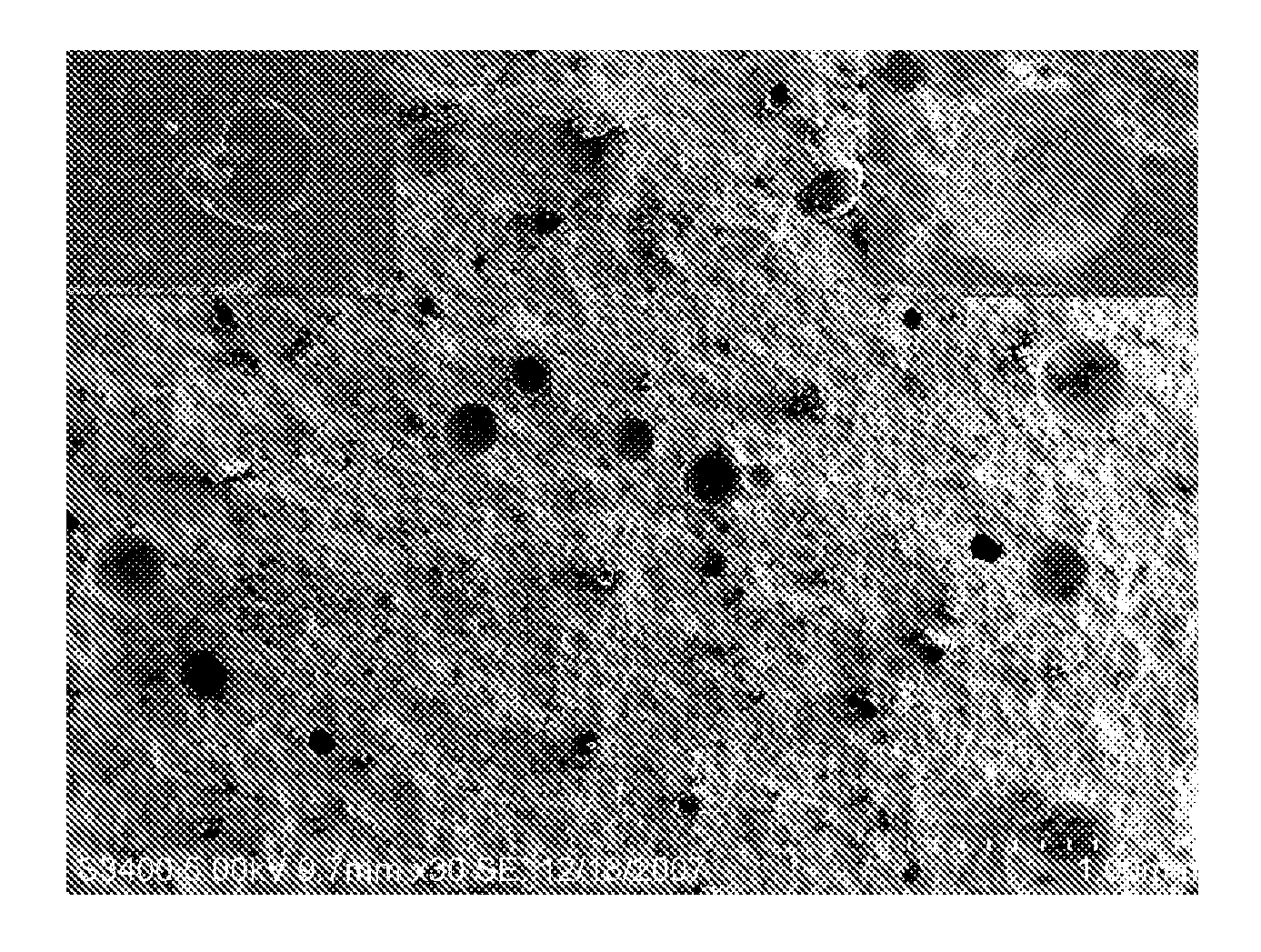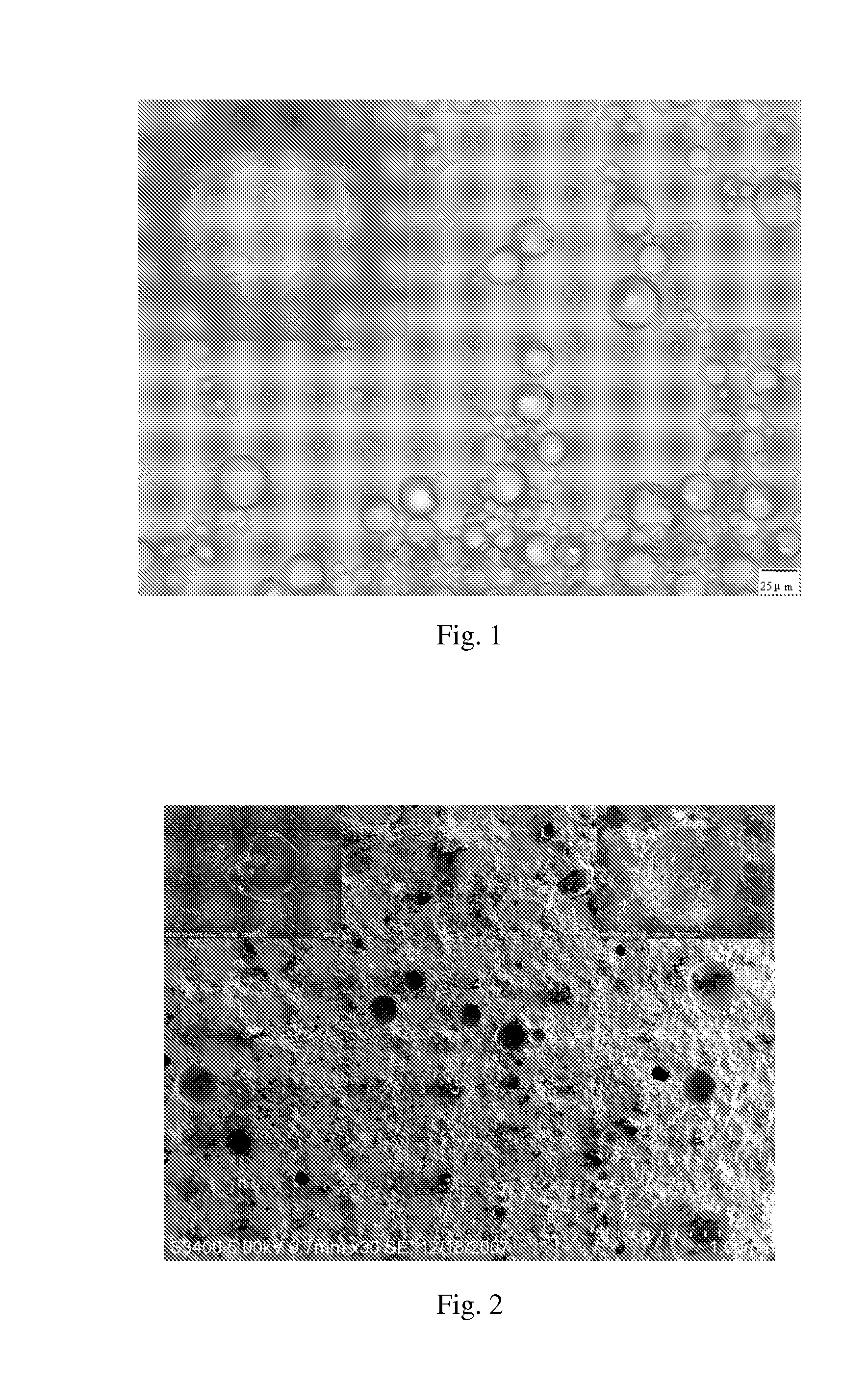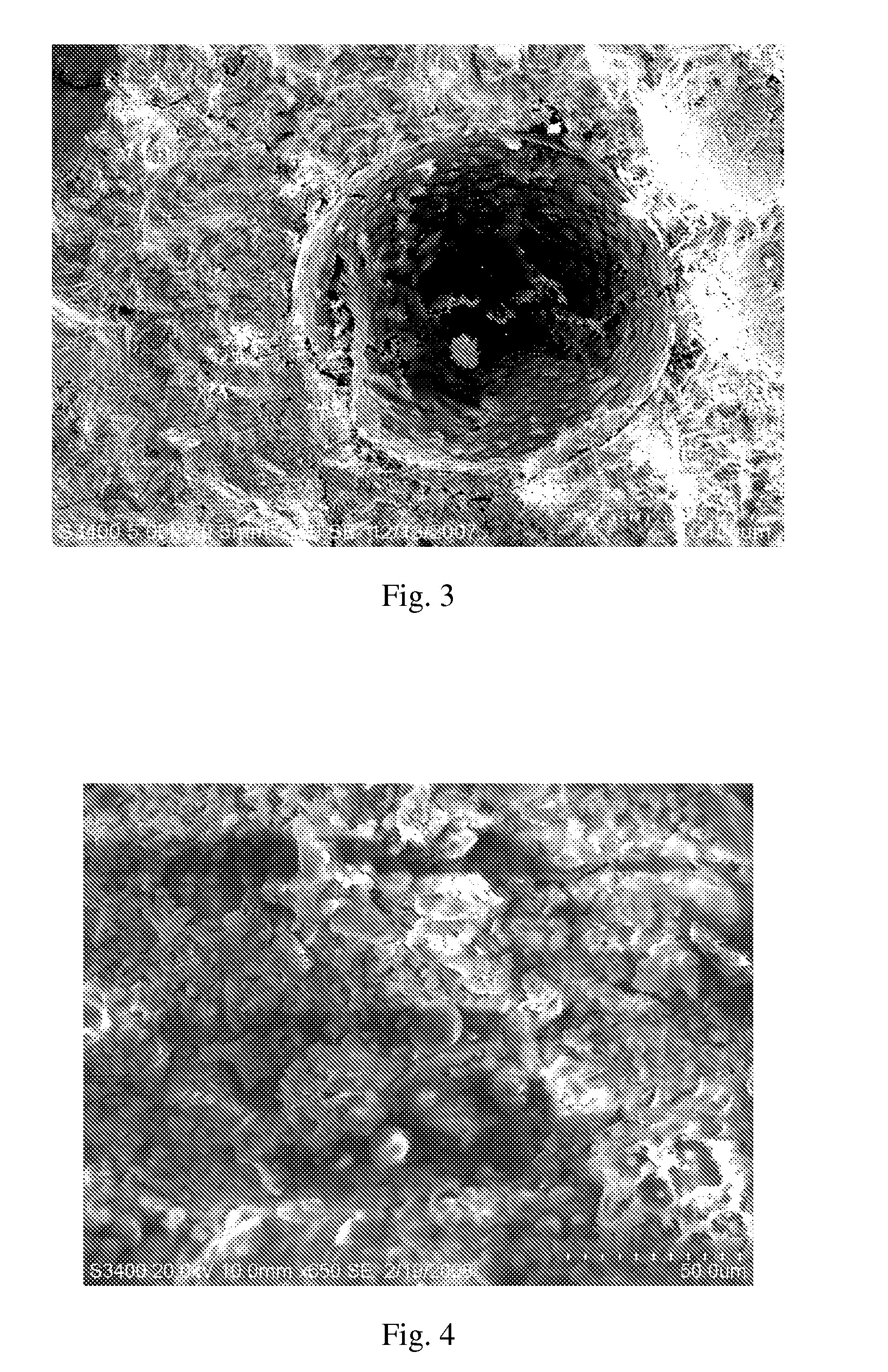Self-Repairing Concrete Used Urea-Formaldehyde Resin Polymer Micro-Capsules and Method for Fabricating Same
a technology of urea-formaldehyde resin and self-repairing concrete, which is applied in the field of self-repairing concrete and similar building materials, can solve the problems of reducing the life of the structure, threatening the safety of the structure, and the limitations of detection technology may be undetectable, so as to achieve the effect of reducing the flexural strength
- Summary
- Abstract
- Description
- Claims
- Application Information
AI Technical Summary
Benefits of technology
Problems solved by technology
Method used
Image
Examples
embodiment 1
[0035]Using diluents to improve the fluidity of epoxy resin and adhesive performance, increasing repair efficiency of self-repairing concrete composite materials. adding 20% of the 17 alkyl imidazole curing agent in the E-51 epoxy adhesive, and then adding 20% N-butyl glycidyl ether, the viscosity from the 8200 mpa·s down to 200 MPa·s, the epoxy adhesive fluidity is increasing, which took advantages of capillary siphon; tensile strength varied from 14.0 MPa to 17.6 MPa, modulus from 223.3 MPa increase to 334.0 MPa, which proved that N-butyl ether improve the mechanical properties of epoxy resin. FTIR analyzed showing that the diluents involved in the epoxy adhesive and curing agent cross-linking reaction.
embodiment 2
[0036]With urea-formaldehyde resin as an envelope, put capsule core materials such as repair agents epoxy resin wrapped, preparation for self-repairing concrete composite material micro-capsuless. Dissolved 10.0 grams urea in 20.0 grams 37% formaldehyde, using triethanolamine adjusted pH to 8.5, in mixing state and 70° C. constant temperature conditions, reacted 1 hour, obtained prepolymer. Added 80-160 ml distilled water, add 14.0 grams epoxy resin of example 1 said, a strong stirring for 20 minutes, got a better stability of the oil / water emulsion. Within 2 hours, with 2% sulfuric acid adjusts pH to 4-5. In the stirring speed 300-1200 rpm, reaction temperature 50-80° C. conditions, reacted 2-3 hours. Product was cooled, washed by distilled water, dried and other steps got a white micro-capsule material. The micro-capsulesshowed spherical, with an average particle diameter of 120 microns, wall thickness of 3.5 microns, electron microscope photographs shown in FIG. 1.
embodiment 3
[0037]Using surfactant to improve the manufacture of concrete self-repairing polymer materials micro-capsuless fluidity and dispersion. Mixed 1.5 grams sodium dodecyl benzene sulfonate the invention said in 100 grams of polymer micro-capsules of epoxy resin material, and then stirring for 30 minutes, got a good fluidity and dispersion powder-like substance.
PUM
| Property | Measurement | Unit |
|---|---|---|
| thickness | aaaaa | aaaaa |
| diameter | aaaaa | aaaaa |
| mass ratio | aaaaa | aaaaa |
Abstract
Description
Claims
Application Information
 Login to View More
Login to View More - R&D
- Intellectual Property
- Life Sciences
- Materials
- Tech Scout
- Unparalleled Data Quality
- Higher Quality Content
- 60% Fewer Hallucinations
Browse by: Latest US Patents, China's latest patents, Technical Efficacy Thesaurus, Application Domain, Technology Topic, Popular Technical Reports.
© 2025 PatSnap. All rights reserved.Legal|Privacy policy|Modern Slavery Act Transparency Statement|Sitemap|About US| Contact US: help@patsnap.com



